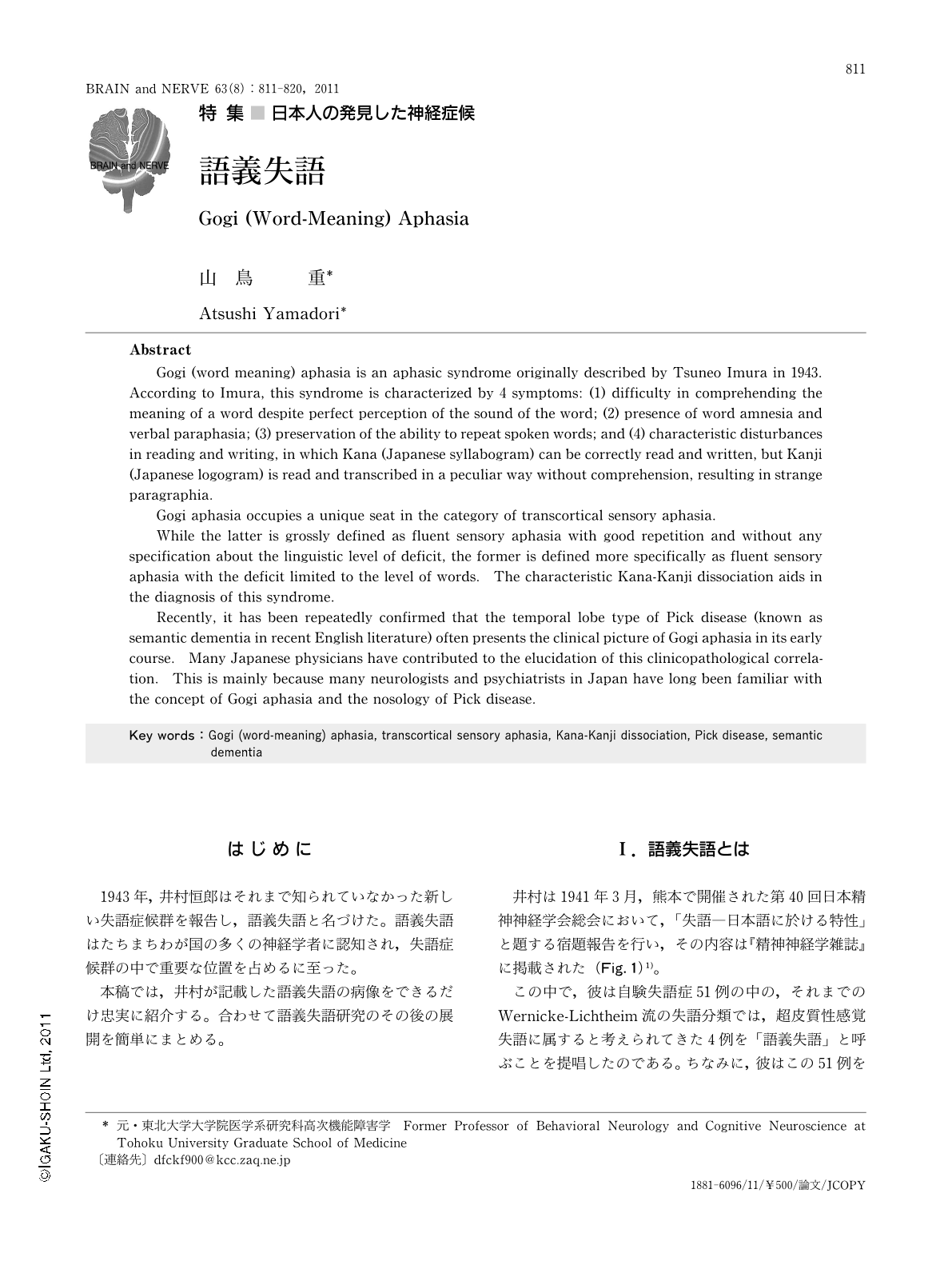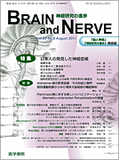Japanese
English
- 有料閲覧
- Abstract 文献概要
- 1ページ目 Look Inside
- 参考文献 Reference
はじめに
1943年,井村恒郎はそれまで知られていなかった新しい失語症候群を報告し,語義失語と名づけた。語義失語はたちまちわが国の多くの神経学者に認知され,失語症候群の中で重要な位置を占めるに至った。
本稿では,井村が記載した語義失語の病像をできるだけ忠実に紹介する。合わせて語義失語研究のその後の展開を簡単にまとめる。
Abstract
Gogi (word meaning) aphasia is an aphasic syndrome originally described by Tsuneo Imura in 1943. According to Imura, this syndrome is characterized by 4 symptoms: (1) difficulty in comprehending the meaning of a word despite perfect perception of the sound of the word; (2) presence of word amnesia and verbal paraphasia; (3) preservation of the ability to repeat spoken words; and (4) characteristic disturbances in reading and writing, in which Kana (Japanese syllabogram) can be correctly read and written, but Kanji (Japanese logogram) is read and transcribed in a peculiar way without comprehension, resulting in strange paragraphia.
Gogi aphasia occupies a unique seat in the category of transcortical sensory aphasia.
While the latter is grossly defined as fluent sensory aphasia with good repetition and without any specification about the linguistic level of deficit, the former is defined more specifically as fluent sensory aphasia with the deficit limited to the level of words. The characteristic Kana-Kanji dissociation aids in the diagnosis of this syndrome.
Recently,it has been repeatedly confirmed that the temporal lobe type of Pick disease (known as semantic dementia in recent English literature) often presents the clinical picture of Gogi aphasia in its early course. Many Japanese physicians have contributed to the elucidation of this clinicopathological correlation. This is mainly because many neurologists and psychiatrists in Japan have long been familiar with the concept of Gogi aphasia and the nosology of Pick disease.

Copyright © 2011, Igaku-Shoin Ltd. All rights reserved.


